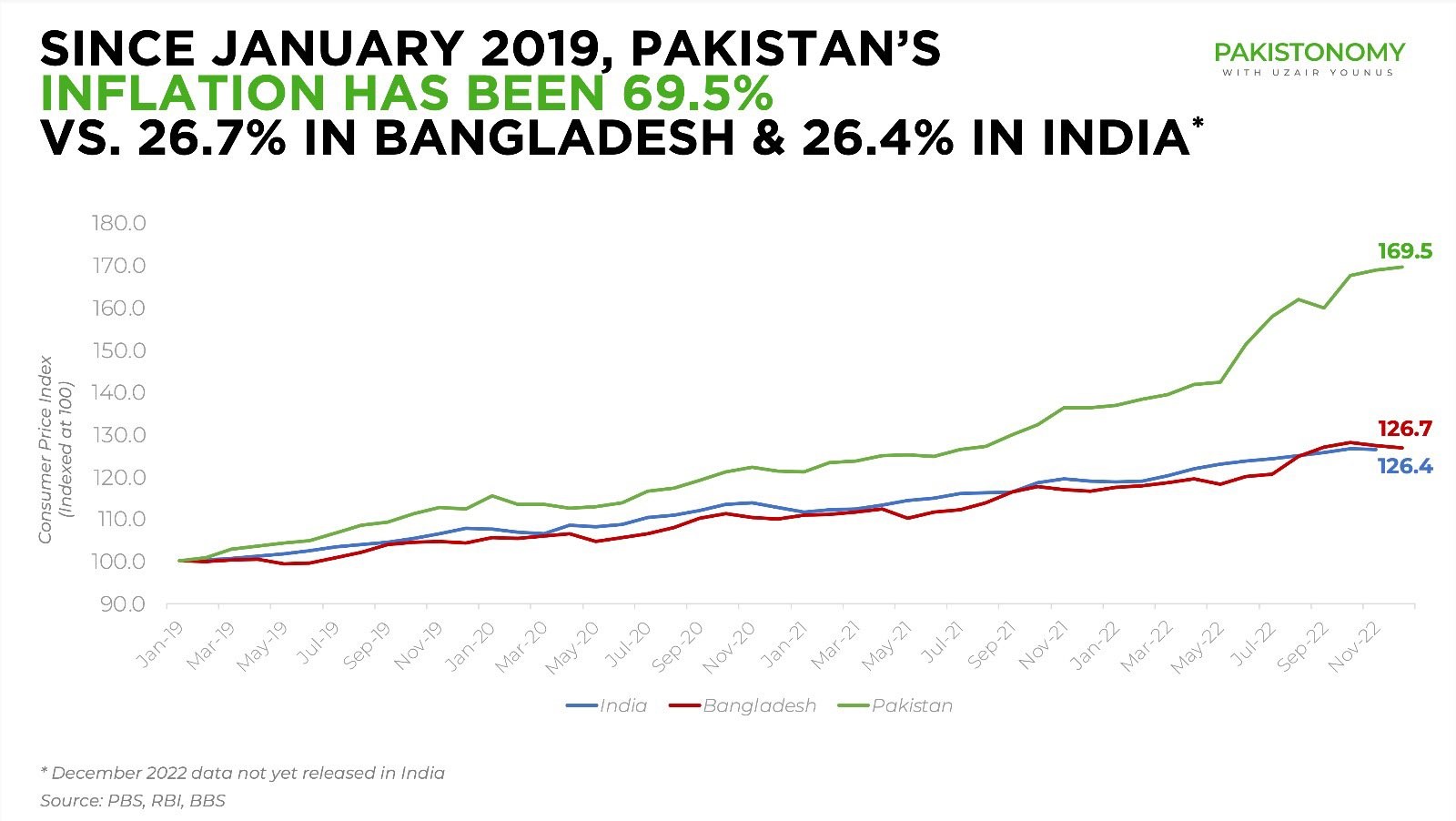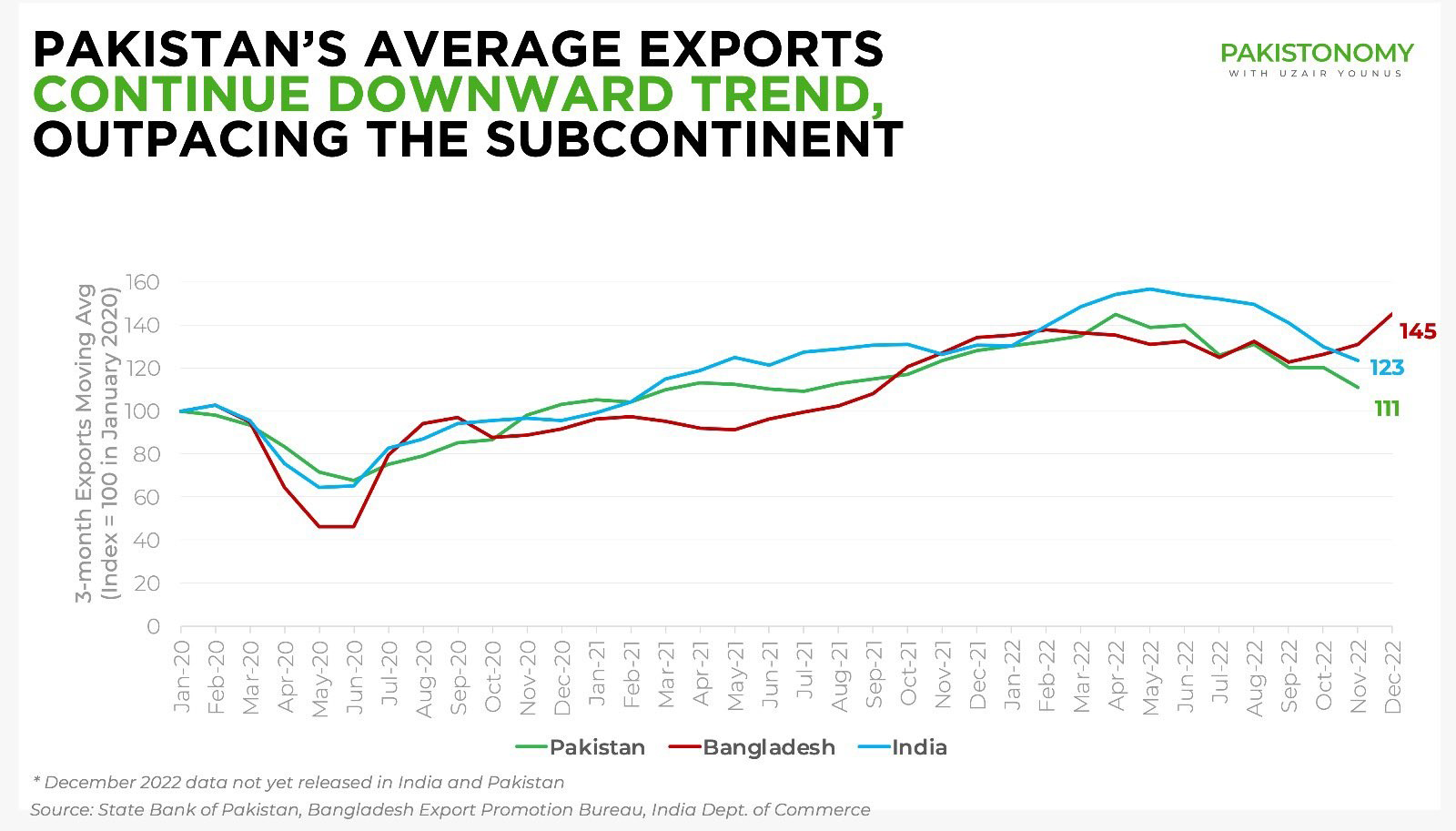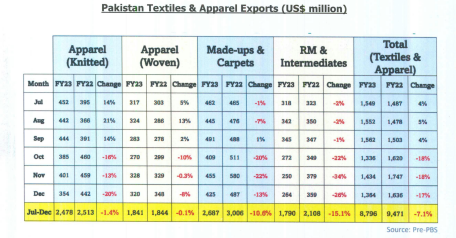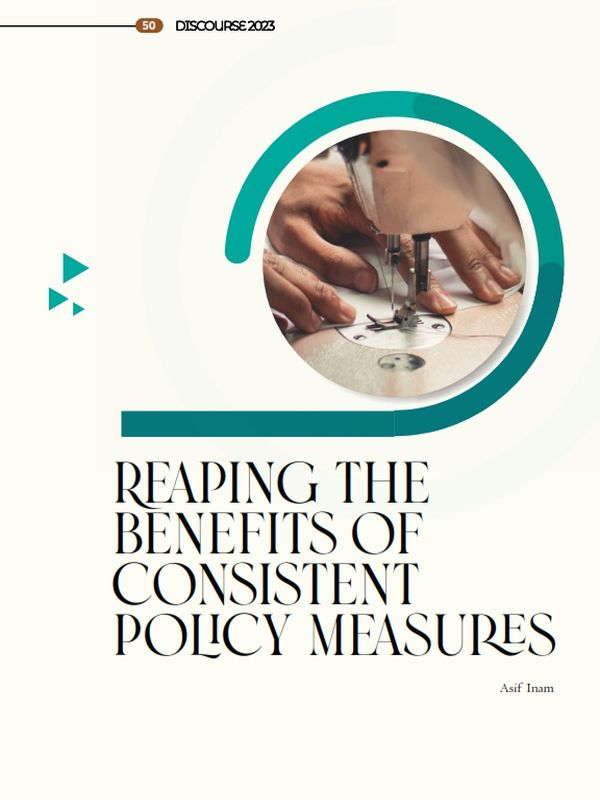Reaping the Benefits of Consistent Policy Measures
Bangladesh is a large contributor to the global textile industry, with the RMG sector accounting for 84% of Bangladesh’s exports. This comes on the back of the sector’s rapid growth and modernisation over the past decade—as well as the strides it has made in improving conditions for the country’s approximately four million garment workers. Bangladesh has surprised the market by consistently showing profits.
1257.6 miles away, Pakistan’s industrial sector is fighting to live another day. Pakistan’s export during Apr-Jun, 2022 amounted to $8,432.09 million showing an increase of 2.52% over Jan-Mar, 2022 and by 27.43% over Apr-Jun, 2021. The textile export data for the last five years showed that volumetric textile exports are the primary driver with a double-digit increase in value added items. Exports during Jul-Jun, 2022 stood at $31,782.09 million. Pakistan while showing potential for increased export until Jun-Jul 2022, later took a nose dive for the worse. The country’s exports of merchandise entered a negative growth in July. The export proceeds fell 5.17 percent to $2.21 billion in the first month of the current fiscal year from $2.34 billion in the corresponding month last year according to data from Pakistan Bureau of Statistics. On a month-on-month basis, the export proceeds tumbled by 23.95% indicating a downward trend in the export sector and just as the increase before the current drop in exports is entirely volumetric.


The textile sector last year exported goods worth $19.3 billion and has further expanded capacity through an investment of $5 billion to increase exports to $25 billion. The expectation and goal were to increase textile exports to at least $24 billion this year, although this failed to materialize. Pakistan’s exports have started declining and will clock in at below $1 billion per month for the rest of the year.

The textile and clothing industry has grown to be the single largest manufacturing sector of Pakistan, employing almost over 385 of the manufacturing labour force. The textile and clothing industry is the backbone of Pakistan’s economy however the sector is confronted with numerous challenges. Worsening international economic situation primarily caused by the Ukraine crisis combined with floods in Pakistan has negatively impacted the already inefficient supply chains of the country. Flooding in dozens of districts of Pakistan has destroyed a wide swath of agricultural land. While the industry requires 14 million bales, the country could only produce 5 million bales of cotton domestically. To meet this gap cotton needs to be imported. However, the forex issues in the economy have curtailed imports of cotton and other essential inputs for exports. The issue of raw material clearance from the ports remains unresolved owing to unavailability of forex and therefore mills are currently unable to obtain cash against documentation and are closing down owing to the shortage of raw materials.
The cost of importing cotton has also increased by 20% due to demurrage/detention and delays while the importers face the loss and failure to book orders due to uncertain and delayed turnaround time for export orders. Manufacturers continuously find their hands tied due to liquidity constraints owing to 60% devaluation of currency with no corresponding increase in working capital facilities. Funds bound as a consequence of 17% sales tax and devaluation on all inputs. Lags in the system committed to pay refunds and accumulation of “Deferred Sales Tax” which has not been refunded for the last 3 years have completely restricted the cash flows for new projects and expansions. As a result, the export oriented units are under immense pressure as they cannot generate funds to service debt. This may lead to massive defaults, further curtailment of capacity and possibly a banking crises.
The huge differential in the rate of Gas/RLNG being supplied in different provinces in Pakistan means that Punjab based industries are no longer viable and have no option but to close down as they are no longer competitive and available orders are shifting or are in process of shifting to the cheaper alternatives internationally and within Pakistan. To add insult to the injury new connections for RLNG/ Gas are not being extended the competitive tariffs effectively rendering the new projects /expansion uncompetitive. Electric supply to mills is erratic and sub-standard including maintenance shutdowns of 5-6 days/months reducing effective capacity by 25% of the mills running on electricity. Punjab based mills run on expensive rate of electricity as compared to Sindh or KPK. LIEDA, FIEDMC and Sundar Industrial Estates based industries are being denied the concessional power tariffs over the last 3 years despite multitudes of meetings and letters of commitments.
Over the past 2 years the textile sector has invested $5 billion in setting up new factories, some of these are now complete and others are in process however some of the machinery of new plants/ expansions is still stuck at ports, L/Cs are delayed for spare parts, and electricity and gas not being provided to these new units, instead of increasing exports by $5 billion per annum is likely to lead to massive banking defaults, complete loss of investor confidence in future for nay investment in Pakistan with many other negative consequences.
However, all is not lost. There is still hope. The textile sector of Pakistan has already exhibited its potential for growth. Strategic collaboration between different levels of government (sub national and national) as well as the private sector which is widely considered the most significant element for policy success in order to minimize resource waste and reduce danger of fostering powerful domestic interest groups and rent seeking activities is the desperate need of the hour.
Clearing all imports of export oriented sectors which have arrived at ports whether against L/Cs or cash against documents can be the first step towards recovery. Prioritizing or exempting export oriented sectors from import controls allowing L/Cs for raw material, machinery, spare parts and other items to restore industry supply line would greatly assist the sector. Refunding all Demurrage and Detention Charges incurred by EOU sector to maintain competitive costs of exports can be another step in the right direction. Maintaining a 24 hour help desk to monitor and resolve exporters issues should also be pursued. Restoring SRO 1125, zero rating for the textile value chain while collecting sales tax on domestic sales at point of sale. Immediate refund of all deferred sales tax, tuff and other dues and Extension in submission date of duty drawback claims for FY21 should all be encouraged. A new export sector working capital lending facility may be established catering to EOU sectors at subsidised rates to tide over the current crises and LTFF be provided where L/Cs are operational and loans approved by banks.
Being an energy insecure country and keeping up with ever rising demand Pakistan’s only solution to energy crises is efficient allocation of scarce resources. It is necessary to accord first priority to export industry on Gas/RLNG and electricity supply and allow competitive tariffs to all new projects and expansions as well as industrial estates. To implement weighted average cost of gas while extending RCET across the country to enable new industrial units, expansions and Punjab based industry to compete. A task force with industry representatives may be made with the purpose of improving supply of grid electricity and all discos should schedule maintenance shutdowns after consultation with impacted industry.
There is a lot to learn from Bangladesh, a country with the lowest minimum wages in the world with cheap gas energy – a country where power outages are almost non-existent, allowing for consistent work and cheaper outlay. Bangladesh’s key strategy for the sector’s growth over the past decade has been to diversify customer countries and move to more complex products and value-added services. Bangladesh’s RMG sector has made progress in broadening its customer portfolio to manage risk and adapt to changing demand patterns in the global fashion market.
Pakistan also needs to diversify and upgrade its product offerings. However, the most important takeaway from Bangladesh is to learn from experiences and mistakes and make policies and mitigating strategies to overcome the challenges and flaws of the system. For instance, Bangladesh’s largest challenges were disasters, deaths and safety issues in the textile industry. Tragedies have received worldwide coverage, most notably the Dhaka fire and collapse of Rana Plaza (2013). Bangladesh learned from its mistakes and started taking responsibility for its workers and the reforms which were once promised came into actual practice. Today, Bangladesh’s RMG sector is a frontrunner in transparency concerning factory safety and value-chain responsibility, thanks to initiatives launched in the aftermath of disasters (including the Accord on Fire and Building Safety in Bangladesh, the Alliance for Bangladesh Worker Safety, and the RMG Sustainability Council). These measures led to the closure of hundreds of unsafe, bottom-tier plants and the scaling up of remediation activities in many others.
We need to develop an action plan not only to solve our immediate problems but also to ensure long-term solutions to such problems. Policies like a “24-hour helpline” for manufacturers who are importers and require immediate assistance in case of any supply chain disruption should be in place. We need solutions not just temporary in nature but ones that can be sustainable and beneficial for us over the long run. With the right policy tools and support from the government, the textile sector will once again be on the right track as the sector has proved its worth time and time again.
The author is currently serving as the Chairman of the All Pakistan Textile Mills Association and is also the Chief Executive of Diamond International Corporation Ltd. He has also been a member of the Advisory Committee of Federal Tax Ombudsmen and is a celebrated Gold member (No. 901644700) of the Young Presidents’ Organization.




